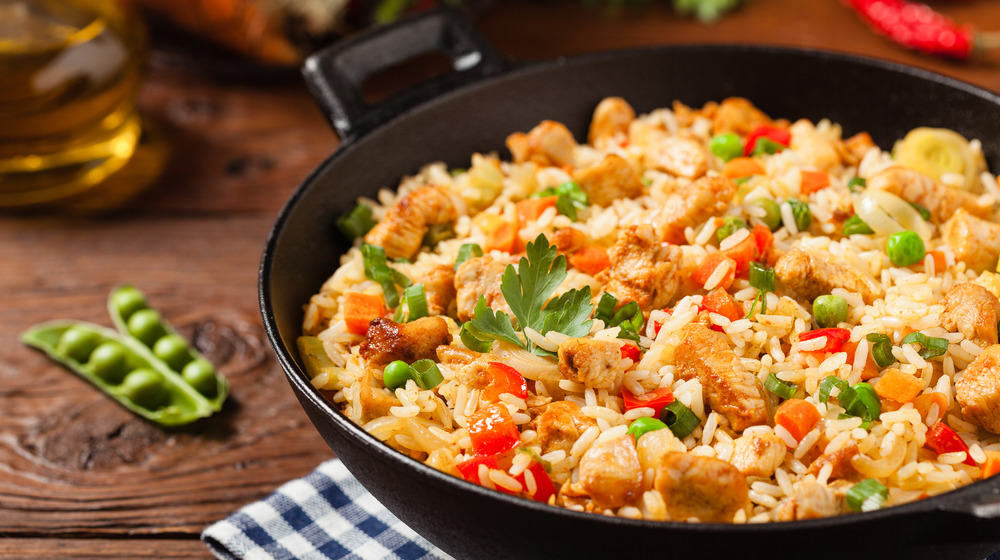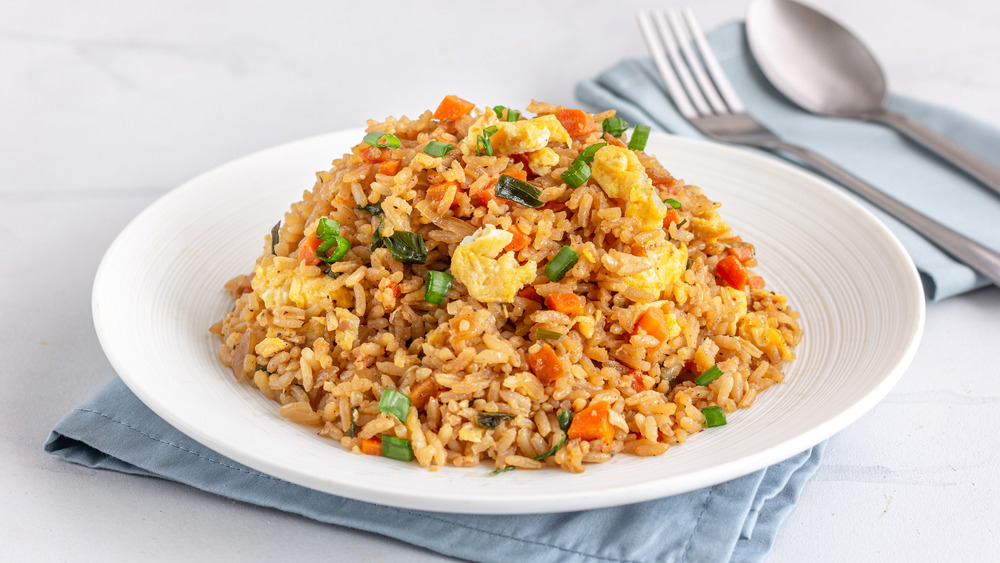The Big Mistake You're Making With Fried Rice From Scratch
Fluffy grains of rice, impeccably seasoned, stir-fried with vegetables and eggs, served steaming hot — the quintessential fried rice experience. Sure, there are many variations, but that's the general premise. Why, then, is it incredibly hard to replicate the restaurant version of fried rice at home? Because while the dish seems relatively simple, ingredients, cookware, and technique make all the difference in the world.
Although there are many versions of the dish, authentic Chinese fried rice is delicately seasoned, lightly sauced, and festooned with small amounts of vegetables and meat (via Serious Eats). You won't find big hunks of meat or copious amounts of sauce in traditional fried rice. With that as our foundation, let's tackle the most common mistakes, starting with the rice.
The best rice for fried rice is extra-long grain white or Thai jasmine because the grains hold their shape and stay separate during cooking (via Carolina Rice). Stickier medium-grain rice can be used in a pinch but should be day-old or chilled to prevent clumping (via Jessica Gavin).
Real Simple explains that, before cooking, rice should be rinsed in a mesh sieve or colander to remove excess starch. Then, after cooking, the rice needs to be cooled and dried, which is done by spreading it out on a baking sheet and letting it cool for an hour or so. If you want to prep ahead, do this step up to 48 hours in advance and chill the rice in the fridge. Leftover chilled rice works, too.
Choose the right equipment and oil and completely change the game
A wok is the best pan for the job because it allows ingredients to cook quickly and evenly over very high heat (via First We Feast). But The Kitchn points out that a large, high-sided skillet — at least 12 inches — will also work.
Since fried rice is cooked over high heat, choose cooking oils with a high smoke point, such as peanut, sesame, canola, avocado, and macadamia (via Foods Guy). Also note that Japanese-style fried rice uses a combination of butter and oil to maximize browning and enhance flavor (via Gimme Some Oven).
Before cooking, ensure that all your ingredients are prepped and ready because, as Real Simple explains, fried rice comes together fast, meaning you'll have no time to dice and slice once things get going.
When cooking, your rice must be consistently "tossed" so every grain has a chance to meet the heat of the pan. Panlasang Pinoy suggests pushing your spatula downward, at a 45-degree angle, to reach the bottom of the pan without squishing the rice; this brings the rice from the bottom to the top and ensures that you preserve the shape and texture of every grain.
In terms of seasoning, soy sauce is a fan favorite, but add just enough to flavor the dish, not discolor it (via The Takeout). Serious Eats explains that when you keep seasonings light, the flavor of the rice and aromatics (onions, carrots, garlic) shine through.

